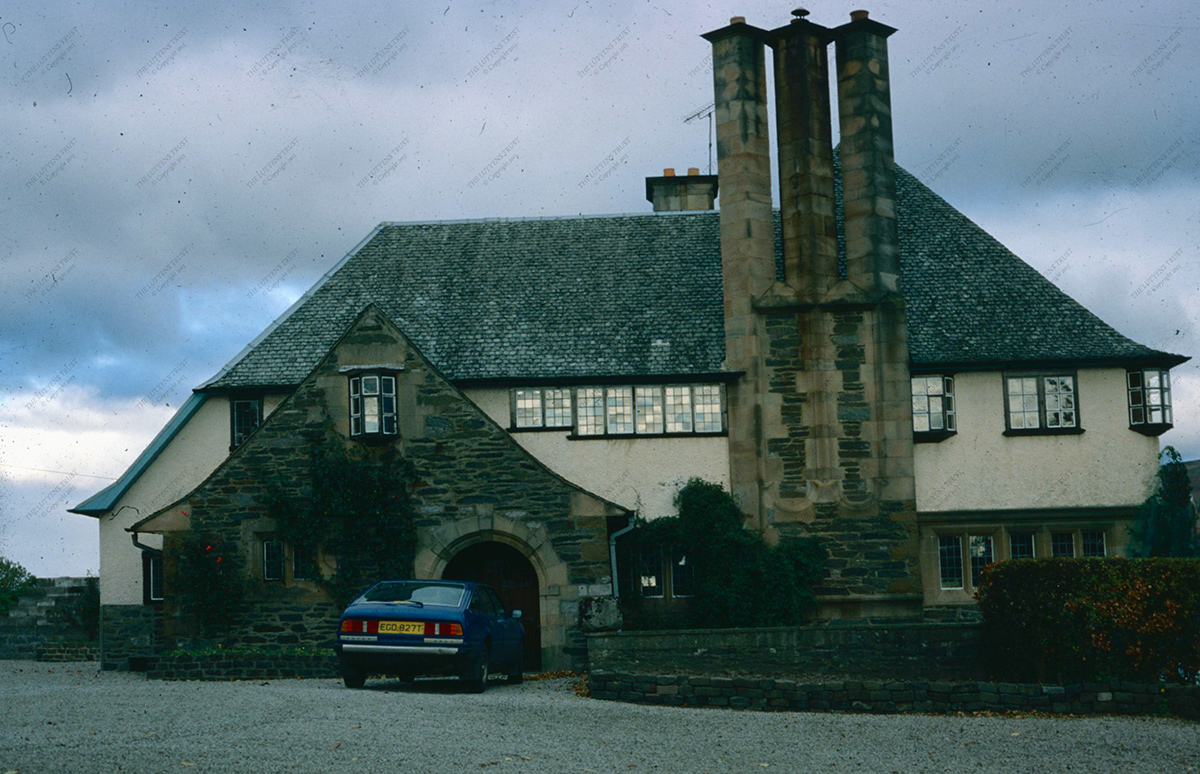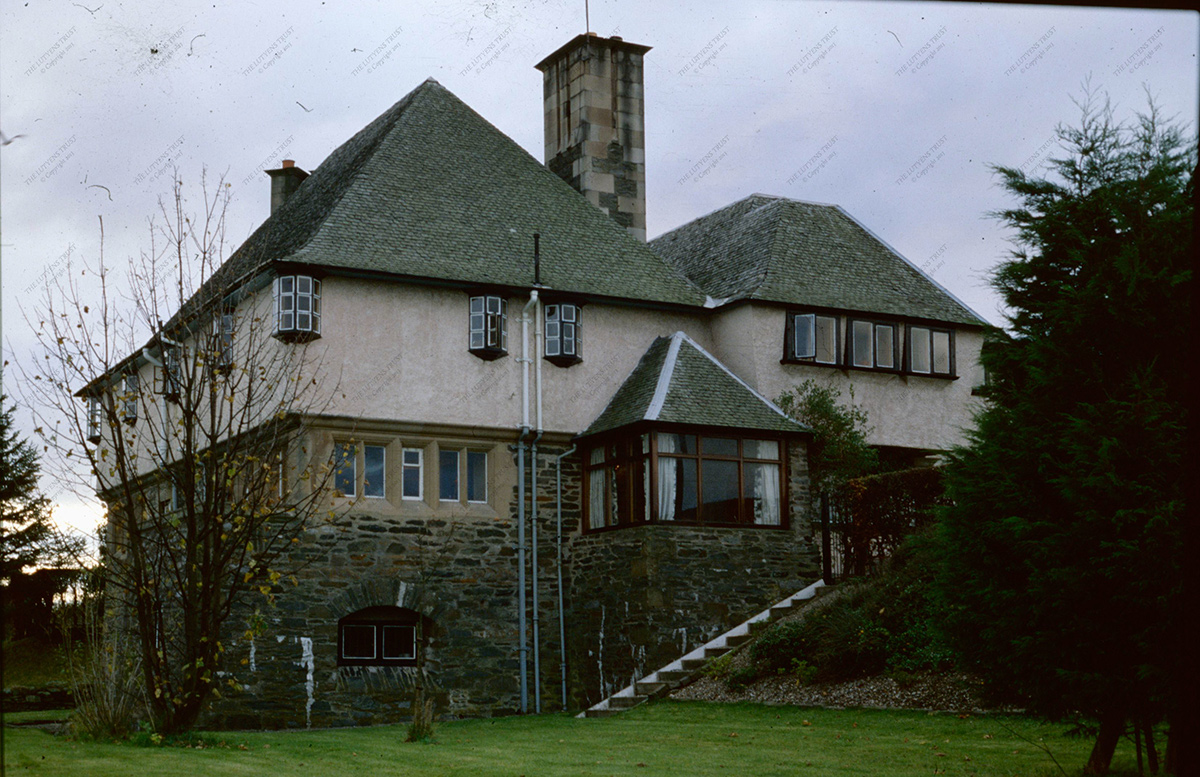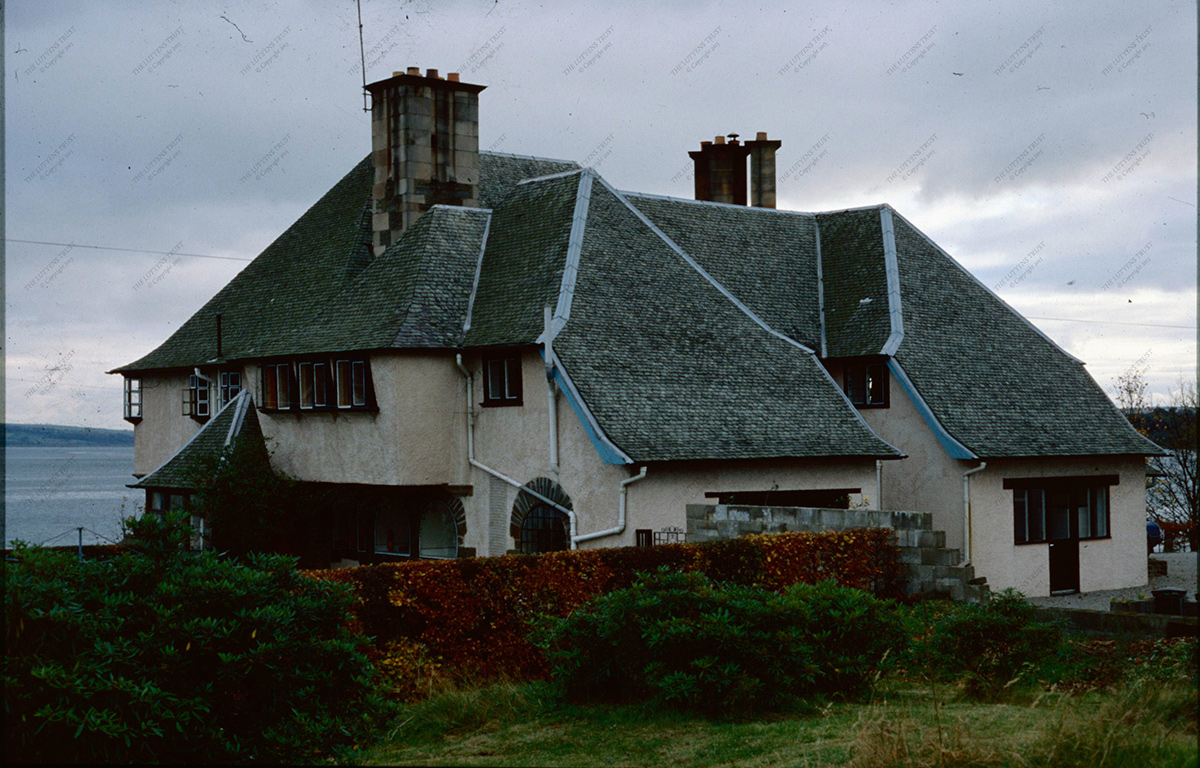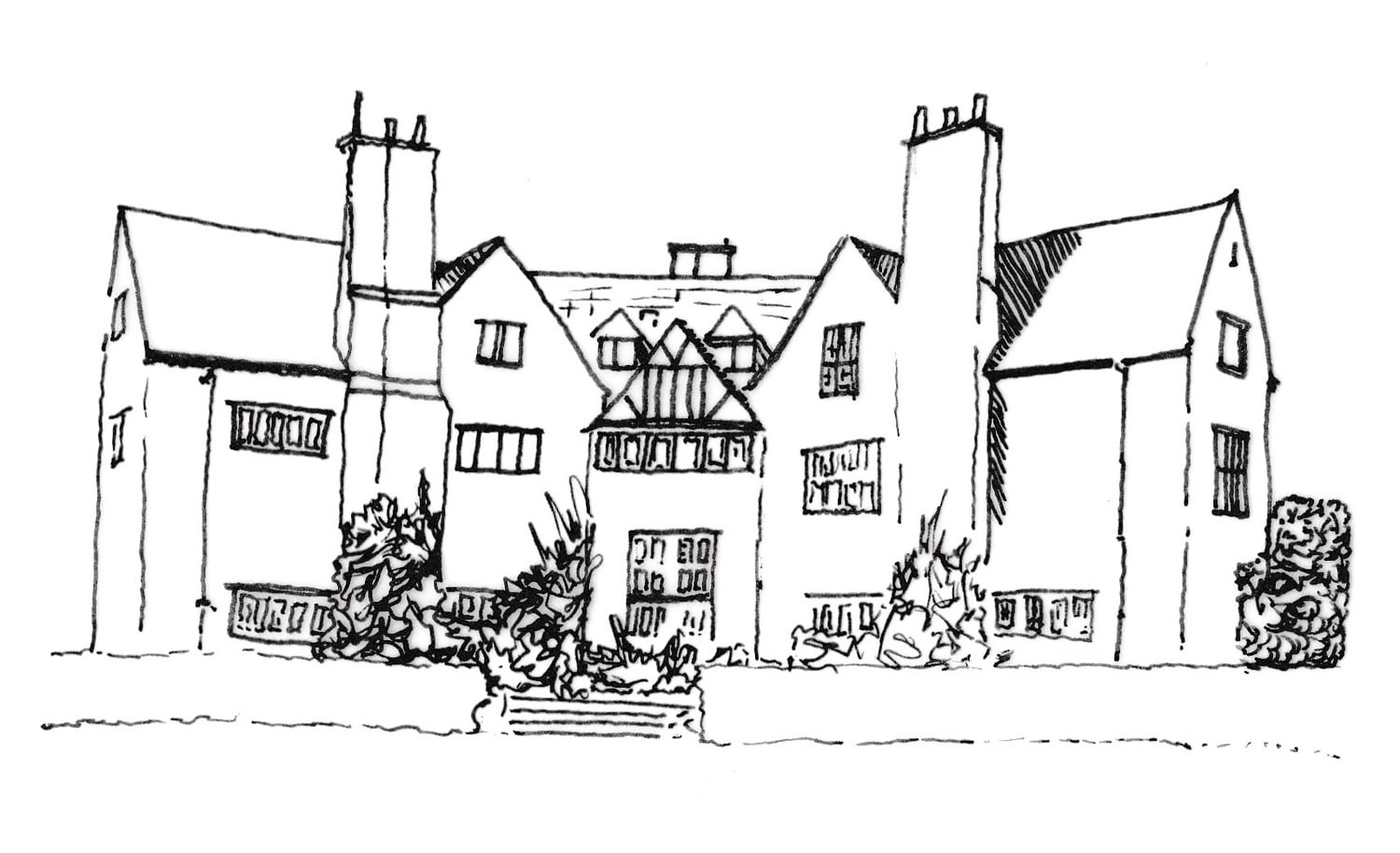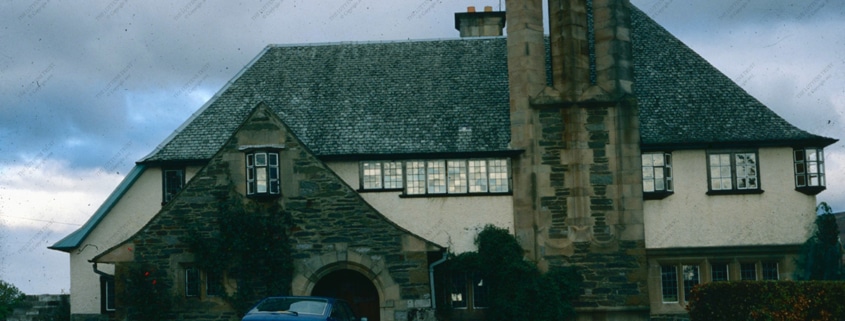
Description
Additions to an existing Inn, its original state is illustrated in Muthesius’s Das Englische Haus Vol. I, p.196. In style it is very close to Scottish Art-Nouveau. The early sketch is even more extreme than the building is built, and shows a Georgian porch combined with various eccentric roof and window forms. The strongly battered base and windows pushed right up under the eaves are typical of many ‘advanced’ architects, such as C. Harrison Townsend, who were working at this time.As built, some of the more extravagant elements have been omitted but in their place there are the surprising corner oriel windows which Lutyens used on a number of houses of this date, though it is noticeable that this motif was always used a long way from Surrey. Note the clever way in which the skew edges of the triple chimney flues are brought down to the flat plane of the wall dying into it with two curves.
The Inn was demolished in the 1960s and the truncated remains of the Lutyens wings are all that now remain. (Amery et al., 1981, cat no. 113)
Edwin Lutyens, 1896-7. 2-storey, (over raised basement to E); rectangular-plan Arts and Crafts villa, originally wing to earlier 19th century hotel (partially demolished, W block forming Ferry Inn Cottage extant, see separate listing). Whinstone rubble with harl-pointing, white-painted harl at principal floor; ashlar margins and dressings; chamfered reveals; masonry mullions at basement and ground floor, multi-paned, metal-framed windows directly under eaves at upper floor; canted oriels. Upper floor slightly jettied on principal elevation; deep-set segmental windows to basement. Projecting eaves.
S (ENTRANCE) ELEVATION: broad, 2-bay, gabled, bell-cast roofed entrance porch advanced to left, low base course; round-arched entrance, alternate voussoirs emphasised; open segmental arch on right return; small bipartite window to left; small canted oriel in gablehead. Former door blocked as bipartite window at ground to outer left of porch, window at 1st floor. 3-bay block to right of porch over deep battered basement. Massive whinstone and sandstone chimney stack rising from basement, breaking eaves to form 3 very tall, sandstone coped, diamond-set stacks; flanking continuous run of ashlar windows at principal floor. 6-light flush window strip to left at upper floor; oriel, bipartite and corner oriel to right of stack; 2 windows at basement.
E ELEVATION: 5 regular bays with oriels to harled upper floor over 2-storey whinstone basement; 2 windows at centre to basement; battered out-shot to outer right (ashlar saddleback coping) forming balcony to round-headed wooden, hinged and studded door, 5-light window. 5-light window to outer left; bipartite metal-framed window to left of centre.
N ELEVATION: 2-storey, 4-bay, harled block to right looking N into walled garden; 3-bay block slightly recessed to left over double basement. 4 segmental-headed windows at ground to right, grouped 1-3, sandstone and whinstone margins; bipartite window at 1st floor outer right; jettied 3-bay, bell-cast roofed, block at 1st floor to left, closely-spaced bipartite windows corbelled out at cill. 3 regular bays to upper floor left, corner oriel, 2 closely spaced oriels at centre; lower piend-roofed glazed conservatory on rubble battered outshot to left in re-entrant angle; 5-light window, window at lower basement level.
W ELEVATION: 3-bay; flanking advanced, bell-cast roofed jambs, garage door in jamb to left, door with flanking bipartite windows; recessed metal-framed 5-light window at ground (plate glass), 1st floor (multi-paned).
Plate glass and multi-paned windows; graded grey/green slate to bell-cast and piended slate roof, lead flashings; tripartite wallhead stack on S elevation; broad, corniced sandstone ridge stack on N ridge.
INTERIOR: most of original interior lost, 2 back-to-back deeply-set, round-headed fireplaces with chamfered mouldings survive. Circa 1950s pine and beech panelling throughout; glass fire divisions along corridors; pine doors.
Statement of Special Interest The house is one of the few Lutyens designed buildings in Scotland and is a good example of the architect’s style at this period.
Princess Louisa, daughter of Queen Victoria and wife of the Marquis of Lorne, later 9th Duke of Argyll, commissioned additions to the Ferry Inn, which had been in existence from the earlier 19th Century. It is likely that Princess Louisa was introduced to the architect by Gertrude Jekyll, who collaborated with Lutyens on a number of designs. The design requirements comprised the addition of a wing containing reception rooms and bar with bedrooms above. The drawings in the RIBA vary from the executed designs and the inn as built shows more Scots Baronial detailing than Lutyens’ original design. The inn was used as a convalescent home for soldiers recovering from the Boer War. The interior was gutted when used by the American Navy. The present owner, a boat designer, refitted the interior with pine and beech panellings. Ferry Inn Cottage, originally the rear half of Lutyens extension, is listed separately. (Historic Environment Scotland, LB42630)
Bibliography
Amery, C., Richardson, M. and Stamp, G. (1981) Lutyens, the Work of the English Architect Sir Edwin Lutyens (1869-1944): Hayward Gallery London, 18 November 1981-31 January 1982. London: Arts Council of Great Britain.Historic Environment Scotland. Rosneath Point, Ferry Inn. [Online] Available from: http://portal.historicenvironment.scot/designation/LB42630
Also Cited In
Richardson, M. (1994) Sketches by Edwin Lutyens: Drawings from the Collection of Royal Institute of British Architects (RIBA Drawings Monographs No. 1). London: Wiley.Walker, F.A. and Sinclair, F. (2005) Argyll and Bute. The Buildings of Scotland. New Haven: Yale University Press.
Listing Grade
Historic Environment Scotland Cat. AListing Reference
LB42630Client
HRH Princess Louise, Duchess of Argyll.
